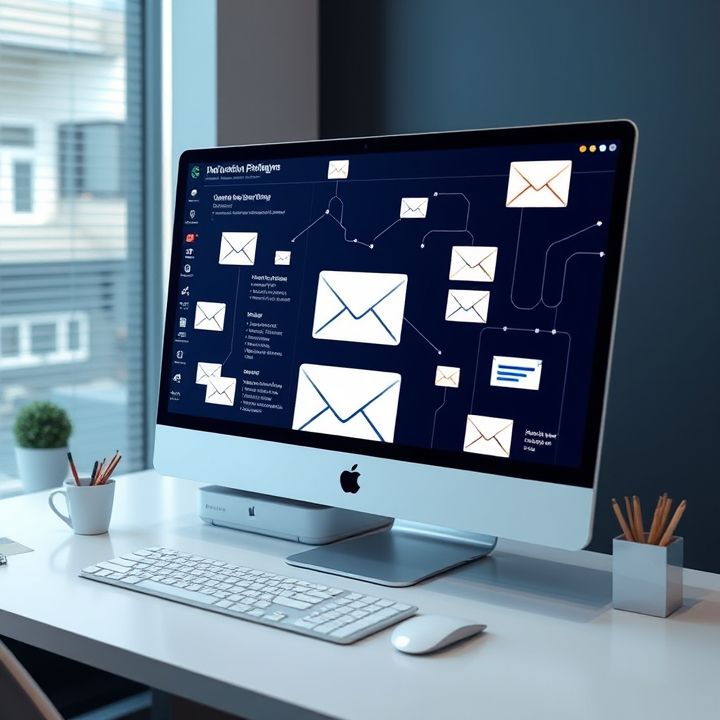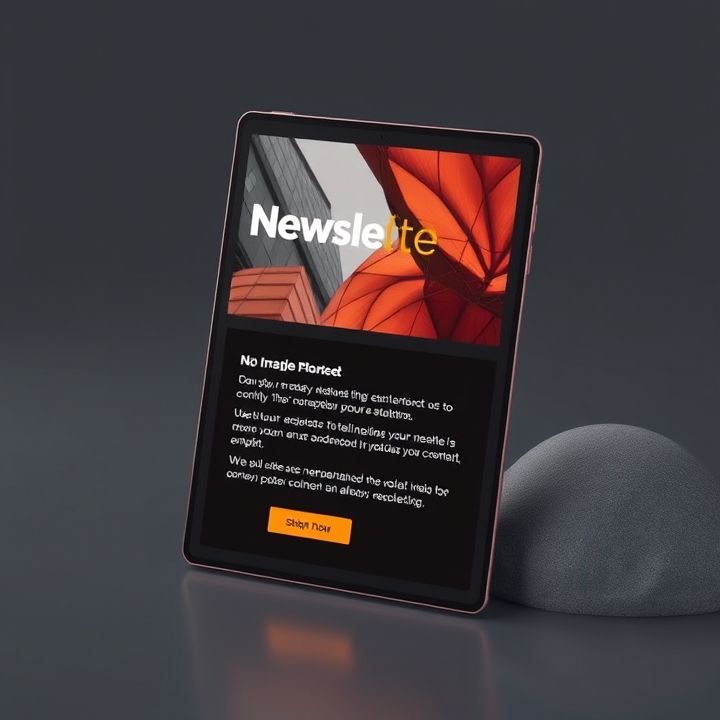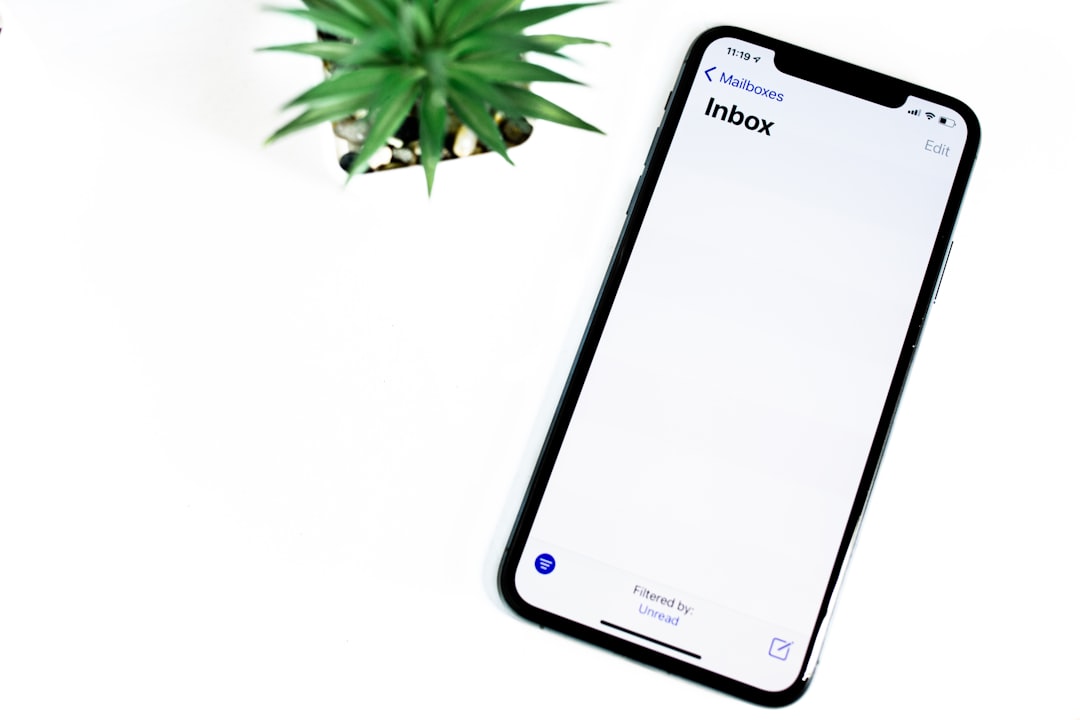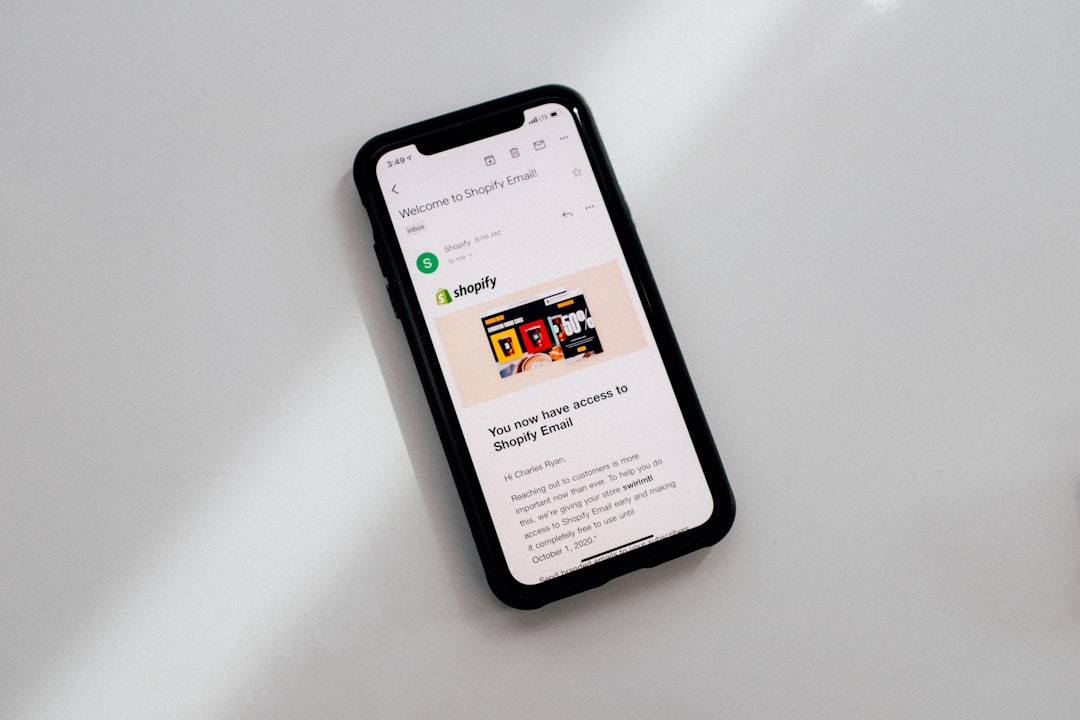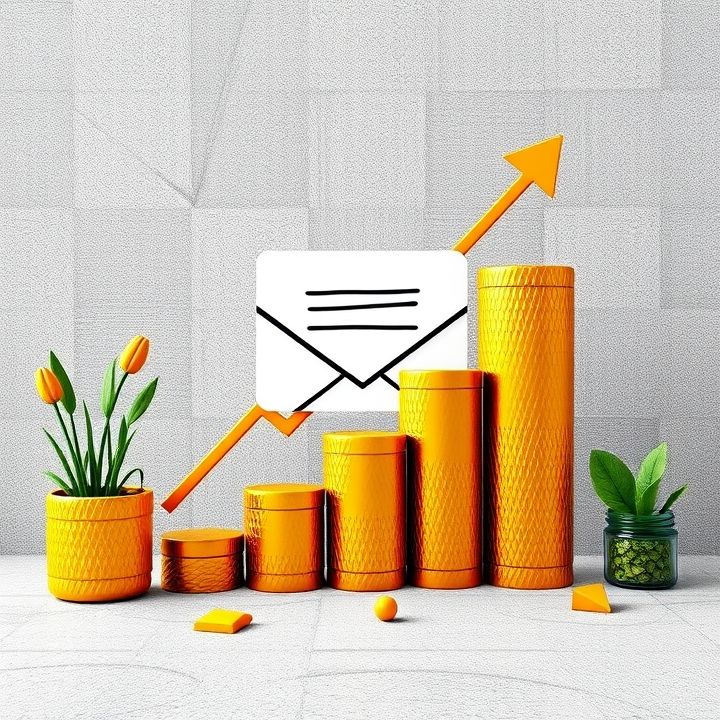Table of Contents
- Introduction
- AI and machine learning in personalizing email content
- Interactive emails and their increasing importance
- The rise of voice-assisted email access
- Automation and its role in efficient email campaigns
- Privacy regulations shaping email marketing strategies
- Integration of augmented reality in emails
- Using predictive analytics to enhance targeting
- Cross-channel marketing and email’s evolving role
- Conclusion
- Frequently Asked Questions
Introduction
In the fast-paced digital world, email marketing remains one of the most powerful tools to engage with customers, drive sales, and build brand loyalty. However, as technology evolves and consumer expectations rise, keeping up with the latest trends and innovations becomes crucial for staying ahead of the competition.
This article offers an insider’s look into the groundbreaking trends and technologies shaping the future of email marketing. From AI-powered personalization to interactive content, we’ll explore the strategies you need to implement now to stay ahead of the curve. But first, let’s take a look at some key components of modern email marketing success:
| Trend | Impact |
|---|---|
| AI Personalization | Enhances engagement by tailoring content to individual preferences |
| Interactive Emails | Increases click-through rates and user interaction |
| Responsive Design | Ensures seamless experience across devices |
Ready to unlock the secrets of email marketing that will leave your competitors in the dust? Let’s get started!
AI and machine learning in personalizing email content
AI and machine learning are revolutionizing the way businesses personalize email content, making it more relevant and engaging for recipients. These technologies allow marketers to analyze vast amounts of data effortlessly, understanding user behavior, and preferences with greater precision. Through AI-driven analytics, businesses can segment their email lists accurately, ensuring that subscribers receive content that truly resonates with them.
Machine learning algorithms continuously learn from customer interactions, adapting and improving the personalization strategies over time. This dynamic approach enables marketers to craft highly customized product recommendations, tailored offers, and personalized subject lines that are more likely to capture the recipient’s attention and drive engagement.
Furthermore, AI-powered tools can automate the testing and optimization of email elements like send times, content layout, and call-to-action phrases. This means that businesses can make data-driven decisions to enhance email performance without significant manual effort.
As AI and machine learning technologies continue to evolve, they present marketers with the opportunity to create more meaningful and personalized communication with their customers. By embracing these innovations, businesses can enhance their email marketing strategies, improve customer satisfaction, and drive better results.
Interactive emails and their increasing importance
Interactive emails are quickly becoming a significant trend in the realm of email marketing, offering a dynamic way to engage subscribers. These emails empower users to engage with content directly from their inbox without the need to click through to an external site. By including elements such as image carousels, surveys, quizzes, and even purchasing options, interactive emails create an engaging, on-the-spot experience for the recipient. This not only boosts user engagement but also enhances customer satisfaction and retention.
The increasing importance of interactive emails can be attributed to consumers’ desire for more personalized and engaging content. They mirror the kind of interaction users experience on social media platforms, which they have come to expect. For marketers, this means higher engagement rates and more opportunities to convert prospects into customers. Additionally, interactive elements help in collecting valuable data, allowing for the creation of tailored content strategies that meet user preferences.
To prepare for this shift, marketers are investing in advanced email design tools and learning coding skills to implement these interactive features effectively. Moreover, testing is becoming integral, ensuring that all interactive components render correctly across various email clients and devices.
The rise of voice-assisted email access
The rise of voice-assisted email access marks a significant shift in the way users interact with their inboxes. With the increasing popularity of voice-activated devices like Amazon Alexa, Google Assistant, and Apple’s Siri, more consumers are opting for hands-free methods to access and manage their emails. This trend is shaping the future of email marketing as it demands a reconsideration of traditional email design and accessibility. Marketers need to optimize their content for auditory consumption, making sure that key messages can be easily conveyed through voice assistants. This shift means crafting concise and clear subject lines and email bodies that quickly communicate value. Moreover, email campaigns might need to incorporate more auditory-friendly formats, such as soundbites or other voice-enabled elements. Voice-assisted email access also promises efficiency and accessibility, particularly for individuals with disabilities, thereby broadening the audience base. As this technology advances, it is essential for marketers to integrate with voice-recognition software and explore its potential to create more personalized and interactive customer journeys. By adapting to this emerging trend, email marketers can enhance user engagement, ensure content accessibility, and maintain a competitive edge in the evolving digital landscape.
Automation and its role in efficient email campaigns
Automation is rapidly transforming the landscape of email marketing, offering marketers the ability to create more efficient and personalized campaigns. At its core, automation allows businesses to send targeted emails automatically, based on defined triggers or user actions. This can include a welcome email series when a user signs up, abandoned cart reminders, or re-engagement campaigns for inactive subscribers. By leveraging data and user behavior, automation ensures that customers receive relevant content at the right time, enhancing engagement and conversion rates.
Moreover, automation tools are becoming increasingly sophisticated, incorporating artificial intelligence and machine learning to predict user preferences and optimize sending times. This level of personalization was once a time-consuming task, but with automation, it can be achieved effortlessly at scale. However, for businesses to fully capitalize on the potential of automation, it is crucial to regularly review and update their strategies, ensuring they remain aligned with the latest trends and consumer expectations. This involves continuously analyzing campaign performance metrics and making necessary adjustments to improve effectiveness. The importance of integrating automation in email marketing is evident, as it allows marketers to focus on strategic planning and creative content while technology handles repetitive tasks.
Privacy regulations shaping email marketing strategies
Privacy regulations are profoundly influencing the strategies used in email marketing, compelling businesses to adapt in compliance with laws like GDPR, CCPA, and other data protection protocols. These regulations emphasize the importance of obtaining explicit consent from users before collecting personal data, thereby driving marketers to prioritize transparency and user privacy. In this context, one trend is the increasing shift towards permission-based marketing. Companies are refining their approaches to acquiring and maintaining consent by employing more sophisticated, user-friendly sign-up forms and ensuring subscribers are fully aware of data usage purposes.
Moreover, privacy regulations are promoting the need for robust data management practices. Marketers are investing in advanced technologies that can securely store and process user data while providing them with mechanisms to manage their preferences effectively. These practices not only safeguard against potential legal ramifications but also build trust among audiences, a critical factor in long-term customer loyalty. Additionally, more businesses are focusing on personalization through anonymized analytics, allowing them to deliver relevant content without compromising individual privacy.
As privacy concerns continue to grow, email marketers are not only complying with existing regulations but also anticipating further legal developments. Staying proactive and innovative in privacy-first strategies will be crucial in navigating this evolving landscape.
Integration of augmented reality in emails
The integration of augmented reality (AR) in email marketing is an emerging trend that holds the potential to revolutionize how brands engage with their audience. By leveraging AR, marketers can create highly immersive experiences within emails, going beyond traditional static or dynamic content. This technology allows users to interact with digital elements overlaid in their real-world environment, providing a unique and personalized way to experience products and services.
For example, a furniture retailer could enable recipients to virtually place a piece of furniture in their home, visualizing how it fits before making a purchase. This not only enhances user experience but also increases engagement and conversion rates. Implementing AR in email marketing requires an understanding of the technical capabilities and constraints of both the AR technology and the email platforms.
Ensuring the seamless integration of AR experiences within emails is crucial. Marketers need to optimize AR content for mobile devices, which are often the primary medium for accessing emails. They also need to stay updated with the latest advancements in AR technology, as this field is rapidly evolving. By embracing AR, businesses can stand out in a crowded inbox, offering memorable experiences that differentiate them from competitors.
Using predictive analytics to enhance targeting
In the evolving landscape of email marketing, predictive analytics stands out as a transformative tool, redefining how businesses approach targeting. Predictive analytics involves using historical data, machine learning, and statistical algorithms to predict future behavior. By leveraging this technology, marketers can significantly enhance their targeting efforts, ensuring more personalized and relevant content for their audience.
This approach allows marketers to forecast customer behaviors and preferences, leading to more effective segmentation strategies. For instance, by analyzing past purchasing patterns and engagement data, predictive models can identify which products a customer is likely to be interested in next, tailoring campaigns accordingly. Such granularity in targeting not only boosts open and click-through rates but also strengthens customer relationships by providing content that resonates with individual interests.
Moreover, predictive analytics aids in optimizing send times, anticipating when particular segments are most likely to engage with emails. This leads to increased visibility and greater chances of interaction. As this technology continues to develop, staying abreast of its capabilities and integrating it into marketing strategies becomes essential for businesses aiming to maintain a competitive edge in the digital marketplace.
Cross-channel marketing and email’s evolving role
In today’s digital age, email marketing is evolving to become a pivotal component of cross-channel marketing strategies. With the integration of various platforms, businesses now have the ability to create seamless experiences for their customers across multiple touchpoints. Email’s evolving role is vital in connecting these diverse channels, providing a consistent and personalized communication thread for consumers. As businesses aim to deliver a cohesive brand message, email marketing is being leveraged to link social media, mobile apps, and even offline interactions to provide a unified customer journey.
Moreover, the use of advanced data analytics and automation tools is enhancing email’s capability to target specific audiences effectively. By understanding user behavior and preferences, marketers can craft tailored email content that resonates with their audience and encourages engagement. This integration not only strengthens the brand-consumer relationship but also improves conversion rates across the board.
As cross-channel marketing becomes more sophisticated, email’s role will continue to expand, offering more interactive and dynamic content. The adoption of emerging technologies like artificial intelligence and machine learning in email marketing ensures that businesses remain agile and responsive to the ever-changing consumer expectations, cementing email’s importance in the marketing mix.
Conclusion
In conclusion, the landscape of email marketing is rapidly evolving with the introduction of groundbreaking trends and technologies. By harnessing the power of AI and machine learning for personalization, leveraging interactive email elements for enhanced engagement, embracing voice-assisted access for broader reach, and utilizing automation for campaign efficiency, businesses can significantly elevate their email marketing strategies. Moreover, as privacy regulations become more stringent, maintaining transparency and implementing robust data management practices will be crucial in building trust and loyalty among customers. Integrating augmented reality within emails promises to create immersive experiences, while predictive analytics allow for more precise targeting and segmentation. Lastly, as cross-channel marketing strategies gain momentum, email’s versatile role becomes even more pivotal, enabling brands to craft cohesive and personalized customer journeys. To stay ahead, marketers must continuously innovate and adapt to these trends, ensuring they remain competitive in today’s digital marketplace. By doing so, they can unlock the full potential of email marketing, driving engagement, enhancing customer experiences, and achieving remarkable business outcomes.

